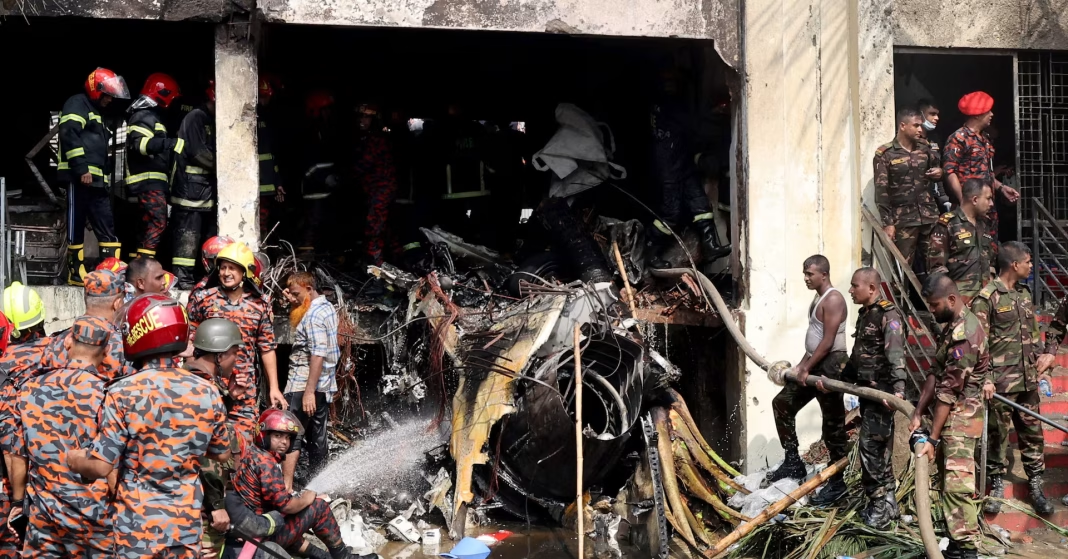What began as a day of mourning quickly spiraled into mass protests across Bangladesh, after a military aircraft slammed into a school in Dhaka, claiming 31 lives, most of them young students. The tragic incident has deepened public unrest in an already volatile political climate.
The crash occurred on Monday when a Bangladesh Air Force fighter jet, a Chinese-built F-7 BGI, lost control and collided with Milestone School and College just as students were preparing to leave for the day. The impact and resulting fire left devastation in its wake, killing at least 25 children, many below age 12.
In the aftermath, furious students gathered at the crash site, confronting government officials with cries of “Why did our brothers die? We demand answers!” The outrage spread across the capital, with crowds storming key government premises and clashing with police, who were seen using batons to disperse the demonstrators.
Emergency crews remained on the scene well into Tuesday, combing through the burned-out structures. Locals, overcome with grief, gathered nearby, some hoping for word on missing relatives, others to mourn.
“I took her to school yesterday morning like every day. I had no idea it would be the last time I would be seeing her,” said Abul Hossain, unable to contain his emotions while speaking about his daughter, nine-year-old Nusrat Jahan Anika, who was buried that same night.
Another parent, Rubina Akter, recounted her son’s narrow escape. “He sprinted to the ground floor and jumped on the grass to douse it,” she said. “He tore his shirt and vest inside which saved him from severe burns.”
The military confirmed that the aircraft was on a routine flight from a nearby base when it experienced technical issues. Despite the pilot’s efforts to divert the aircraft, he and others on the ground were killed when the jet struck the school premises.
By Tuesday, authorities confirmed that the death toll had reached 31, with 165 individuals hospitalized. The health ministry reported that 70 remained under medical care.
To honor the victims, a national mourning day was declared. Flags flew at half-staff, and prayers were held across various religious centers.
Students demanded that the full list of victims be made public, and called for compensation from the air force for bereaved families. They also insisted on grounding outdated aircraft and a complete overhaul of flight training protocols over populated zones.
A release from the press team of interim administrator Muhammad Yunus stated that coordination was ongoing between the military, educational, and healthcare institutions to publish the list of those affected. The statement also assured that military training flights would no longer occur over civilian areas.
The F-7 BGI is considered the final upgraded version of China’s Chengdu J-7 series, itself derived from a Soviet-era MiG-21 model. Bangladesh acquired 16 of these jets starting in 2011, with all delivered by 2013.
This crash occurs at a time when neighboring India is still recovering from a catastrophic aviation disaster, the deadliest in the last ten years where an Air India aircraft crashed into a college dormitory in Ahmedabad, killing over 260 people including many on the ground.
Bangladesh itself remains on edge following political upheaval last year, when Sheikh Hasina left office amidst deadly student-led demonstrations. Nobel Peace Prize winner Muhammad Yunus, now heading the interim administration, has pledged to hold national elections next year, although opposition voices are calling for an earlier date.
Discover more from LN247
Subscribe to get the latest posts sent to your email.


